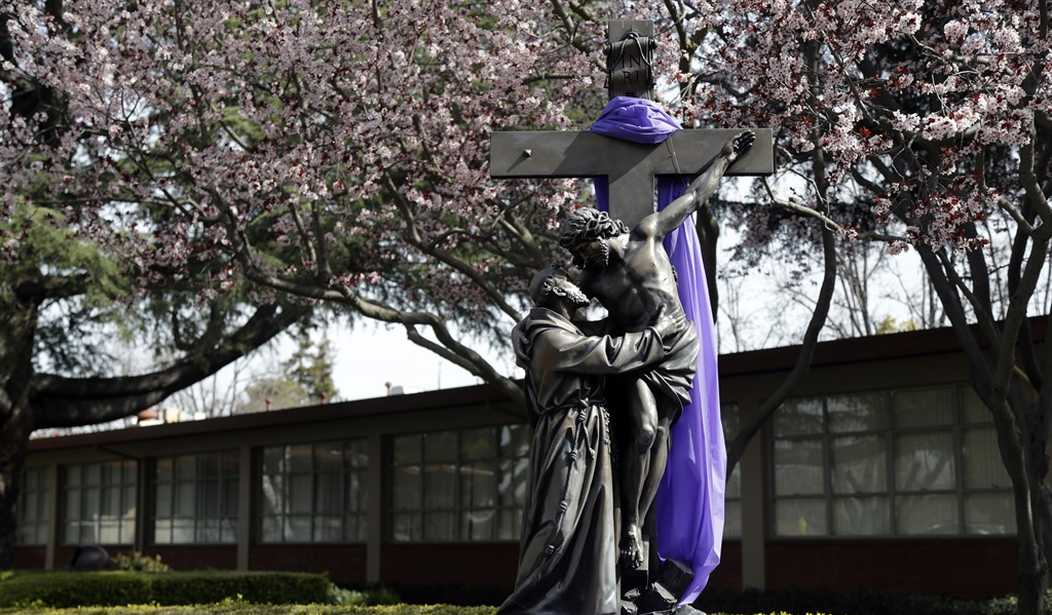There is one area of competition where Catholic schools always beat public schools.
It is not in track and field. It is not in football or basketball. It is in the average scores for national reading and math assessment tests.
The National Center for Education Statistics, which is a part of the U.S. Department of Education, published a report this month on the most recent National Assessment of Educational Progress "long-term trend" (LTT) tests in reading and math that were given to 9- and 13-year-old American students.
The 9-year-olds took the tests in January to March 2022, according to the report. The 13-year-olds took them from October to December 2022.
The sample size among the 9-year-olds in Catholic schools in 2022 was "insufficient to permit a reliable estimate" of their average scores. It was sufficient, however, among the 13-year-olds.
In both subjects, the Catholic school students won.
In reading, the 13-year-old students in public schools had an average score of 254. Those in Catholic schools had an average score of 275.
According to the historical numbers published by NCES, 13-year-old Catholic school and public school students have taken the LTT reading test in 14 school years since 1980. In every one of those years, the Catholic school 13-year-olds beat their public school peers.
From 1980 to 2020, there were 13 years when 9-year-old students took the NAEP LTT reading test and NAEP reported the average scores for both Catholic and public school students. In every one of those 13 years, Catholic school 9-year-olds outscored public school 9-year-olds.
Recommended
The math tests show the same pattern.
In the LTT math tests that 13-year-olds took in October to December 2022, the Catholic school students beat the public school students 289 to 269. In every one of the 14 school years since 1978 when the NAEP long-term math test was given to the 13-year-olds, the Catholic school students won.
Similarly, between 1978 and 2020, there were 13 years when 9-year-olds took the LTT math test and NAEP was able to report the average scores for both Catholic and public school students. The Catholic school students swept all those years.
As this column has noted before, the "main NAEP" test -- as opposed to the LTT test -- has also showed Catholic school students consistently beating public school students in reading and math.
"The NAEP long-term trend assessments in reading and mathematics, which date back to the 1970s, are distinct from the main NAEP assessments, which date back to the early 1990s," says the NAEP website. "The existence of two national assessment programs -- LTT and main NAEP -- makes it possible to meet two major objectives: to measure student progress over an extended period of time (LTT) and to measure students' knowledge and skills based on the most current curricula and standards (main NAEP). Results from the two assessments cannot be directly compared because they use different questions and have different levels of difficulty, and because LTT is sampled by age whereas main NAEP is sampled by grade."
The NCES table for the latest NAEP reading test, which was administered in 2022, shows that Catholic school fourth graders beat public school fourth graders 233 to 216. Catholic school eighth graders beat public school eighth graders 279 to 259.
In cities, Catholic school fourth graders beat public school fourth graders 232 to 210 in reading. In the suburbs, Catholic school fourth graders won 235 to 221. In towns, they won 224 to 201.
Catholic school eighth graders beat public school eighth graders 279 to 255 in cities; 281 to 263 in suburbs; and 270 to 255 in towns.
In the 2019 NAEP math test, as this column has noted before, Catholic school fourth graders beat public school fourth graders 246 to 240. In cities, Catholic school fourth graders won 243 to 235. In suburbs, they won 250 to 244; and in towns, they won 243 to 237.
Catholic school eighth graders that year outscored public school eighth graders 293 to 281 in math. They also won in cities (291 to 276), suburbs (297 to 286), towns (290 to 276) and rural areas (293 to 282).
Taxpayers paid significant amounts to fund these government schools where the students, on average, did not develop the reading and math skills that students developed in Catholic schools. In the 2017-2018 school year, according to NCES, public primary and secondary schools spent a non-inflation-adjusted $14,359 per pupil. In 2018-2019, they spent $15,036. In 2019-2020, when the COVID pandemic hit, they spent $15,524; and, in 2020-2021, they paid $16,345.
Give every parent a voucher equal to what governments spend per pupil in the local public schools, and then let those parents choose where they want their children to learn reading and math -- and the values that will guide them through their lives.

























Join the conversation as a VIP Member